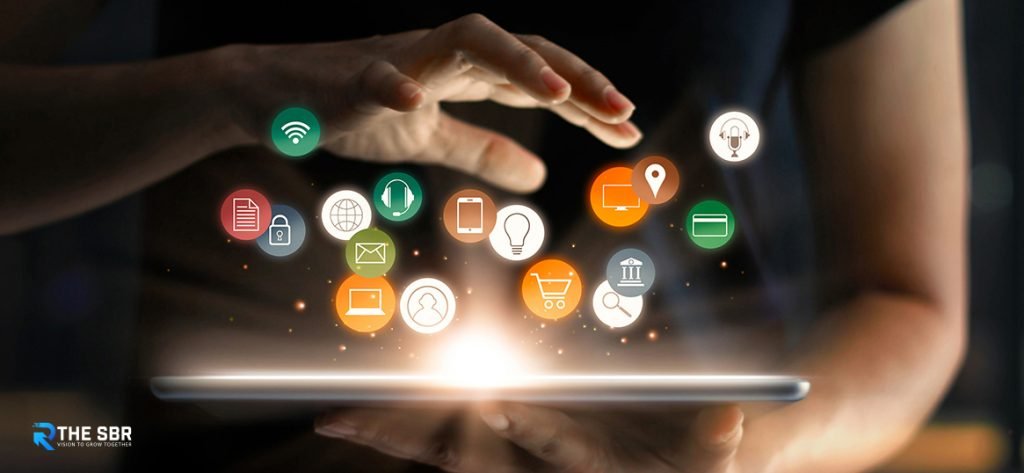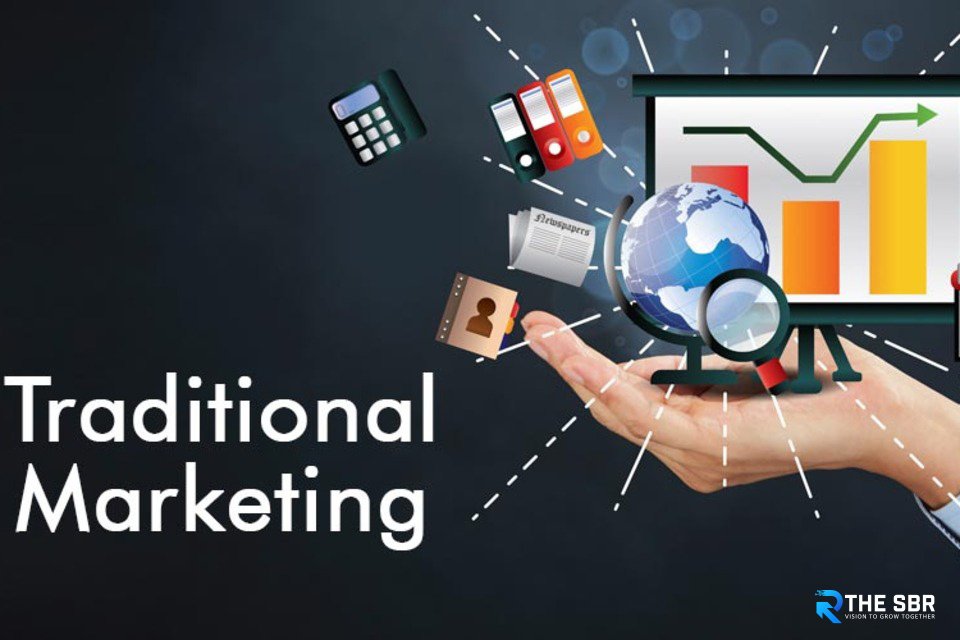When it comes to marketing, there are two main types: digital marketing and traditional marketing. Digital marketing is done primarily online, while traditional marketing is done offline. So which one is right for you? That depends on your business and its goals.
In this blog post, we will explore the differences between digital and traditional marketing and the pros and cons of each type. We will also help you decide which type of marketing is right for your business!
What is Digital Marketing?

Digital Marketing
Digital marketing promotes a brand or product through social media, search engines, email newsletters, mobile apps, and websites. It uses these platforms to reach out to potential customers to increase awareness about its products or services.
Digital marketing can be done through paid ads on social networks such as Facebook and Twitter; organic content posted regularly by a business page that has been built up over time using SEO techniques (so that it appears higher in search results); emails sent directly from companies with information relevant for their customers; videos explicitly created for YouTube channels about topics related to your industry/business niche.
All this activity falls under what we call “Inbound Marketing” because it brings people into your website or online space, as opposed to outbound methods like cold calling or print advertising, which require people to take action (such as pick up the phone and call a company) to learn more about what you offer.
What is Traditional Marketing?

Traditional Marketing
Traditional marketing promotes products through offline methods like print advertisements, commercials, and events. It usually involves physical interaction with potential customers, such as giving out flyers or brochures on the street or inviting them to an in-person event.
Digital Marketing vs. Traditional Marketing:
Digital Marketing: Digital marketing promotes products or brands using electronic devices. It includes everything from social media, search engine optimization (SEO), content strategy, email marketing, etc. Digital marketers use these tools to reach their target audience and engage them through digital platforms like websites, apps, or blogs. Digital marketers can also track their campaigns’ success and measure how they reach their target audience.
Traditional Marketing: On the other hand, traditional marketing is any advertising that doesn’t use digital platforms. It includes TV commercials, print ads, billboards, and more. Traditional marketers usually rely on tried-and-true methods to reach their customers, such as focus groups and surveys. They also often have a good understanding of their customer base and what appeals to them. However, traditional marketing can be expensive, and it cannot be easy to track its success.
What are the Benefits of Digital Marketing?
Digital marketing has several key benefits over traditional marketing:
– Digital campaigns run 24/ hours a day, so there’s no need for costly printing materials or postage stamps!
– Digital also offers more flexibility when it comes time to launch campaigns. You can start and stop campaigns whenever you want, and they can be tailored to specific demographics.
– Digital marketing is cheaper than traditional marketing. You can reach a larger audience for less money with digital campaigns.
– Digital marketing is more measurable than traditional marketing. You can track how many people view your ads, click on your links, and engage with your content. This information helps you fine-tune your campaigns and make them more effective.
Read more Simple Guidance For You In Digital Marketing Strategy.
What are the Benefits of Traditional Marketing?
Traditional marketing also has several key benefits:
– Traditional methods rely on personal relationships between customers and businesses. This creates trust and loyalty that often lasts longer than digital relationships.
– Traditional media (like TV commercials) have high visibility rates, meaning that many people will see your ad.
– Traditional media is often more memorable than digital media, meaning that customers are more likely to remember your ad and what you’re selling.
– Traditional marketing can be less expensive than digital marketing if you target the right audience.
Digital Marketing Pros and Cons?
Digital channels offer some significant advantages over traditional ones, including lower costs per lead, better targeting capabilities (you can reach people based on what they like), higher conversion rates (people who see an ad online are more likely to click it than those exposed through other methods) and greater flexibility in terms of timing when you want your campaign launched.
Digital campaigns run 24/ hours a day, so there’s no need for costly printing materials or postage stamps! The downsides include having limited options if you don’t have access to any digital platforms (like Facebook pages or Twitter accounts) because these channels do require some effort before they’ll work well for you. Also, there can be privacy concerns about using email lists that aren’t yours – but with permission-based ones, it shouldn’t be an issue unless someone opts out from receiving further emails from a specific company!
Traditional Marketing Pros and Cons?
The most significant advantage of traditional marketing is creating a personal connection with potential customers. You can hand someone a flyer or brochure on the street, which allows them to learn about your product or service face-to-face. You can also talk directly to people interested in what you offer at events, building trust and credibility.
Traditional marketing is also very effective for building brand awareness – it allows businesses to put their name in front of as many people as possible in a concise amount of time. The downside is that it can be expensive, and it’s often difficult to track how effective traditional marketing campaigns are in generating leads or sales. It also takes more workforce (and womanpower!) to execute than digital marketing does, so it might not be the best option if you don’t have a lot of staff.
Which one should I use? Digital or Traditional Marketing?
The answer to this question depends on your business and what you hope to achieve with your marketing efforts. If you want to build personal relationships with potential customers, traditional marketing is probably the way. However, digital marketing might be worth exploring if you’re looking for lower costs per lead and greater flexibility in terms of timing when you want your campaign launched!
Digital campaigns run 24/ hours a day, so there’s no need for costly printing materials or postage stamps! Digital also offers more flexibility when it comes time to launch campaigns and doesn’t rely as heavily on print materials that might not get seen by their intended audience members if they are mailed directly without direct contact between customer service representatives firsthand.
Conclusion
Digital marketing vs. traditional marketing Digital channels offers significant advantages over traditional ones, including lower costs per lead and greater flexibility in timing when you want your campaign launched. Digital campaigns run 24/ hours a day, so there’s no need for costly printing materials or postage stamps! The downsides include having limited options if they don’t have access to any digital platforms (like Facebook pages or Twitter accounts) because these channels do require some effort before they’ll work well for you.”








